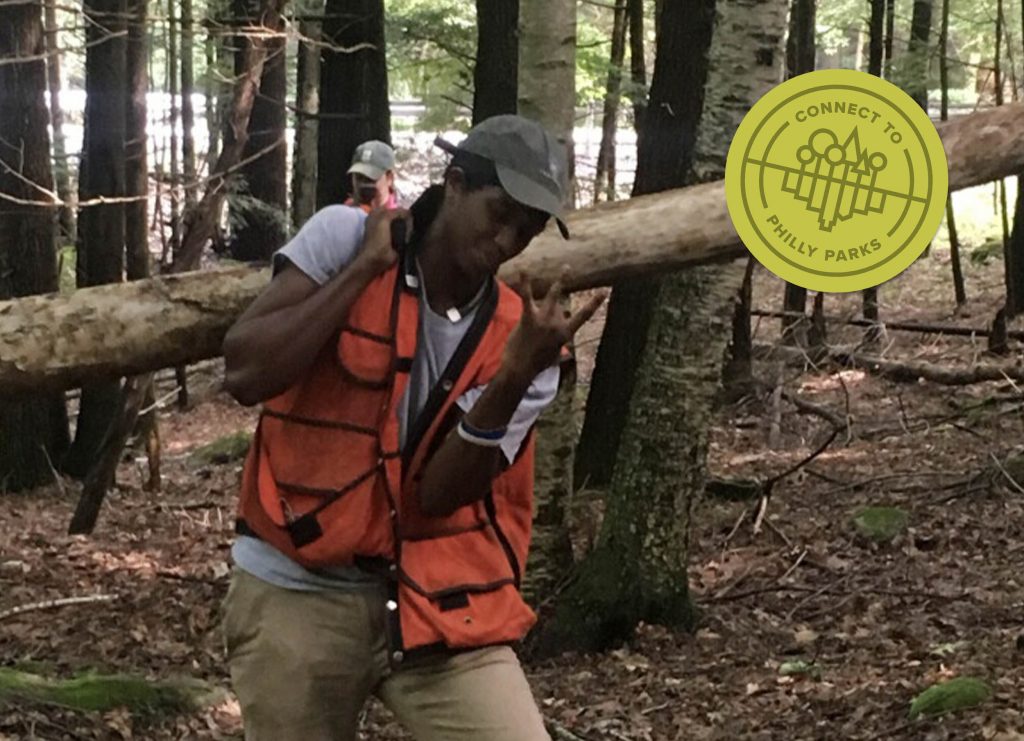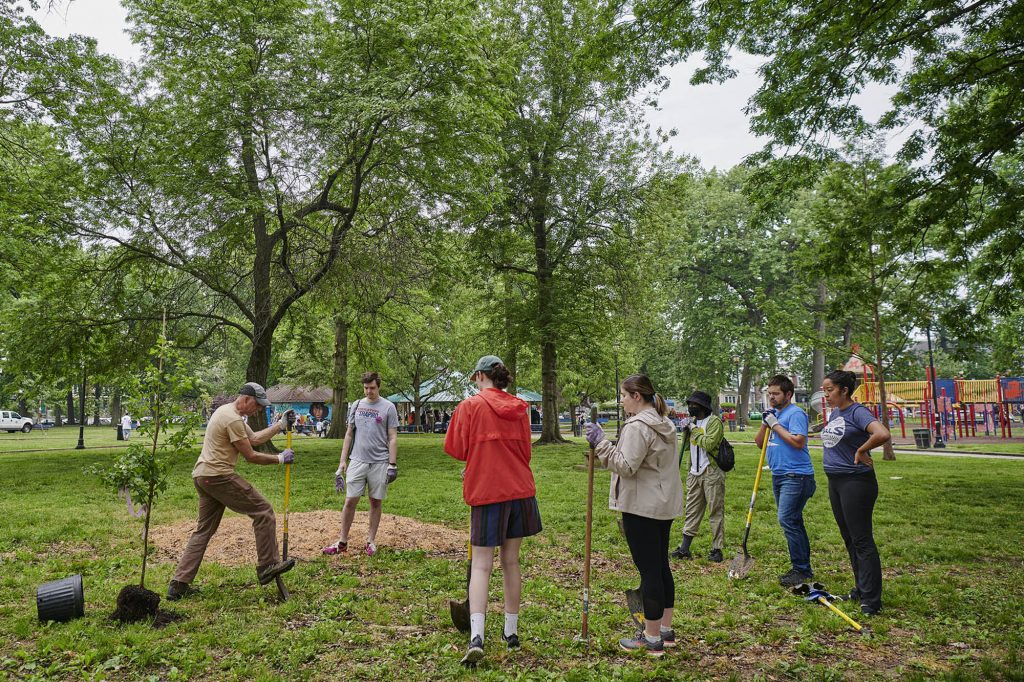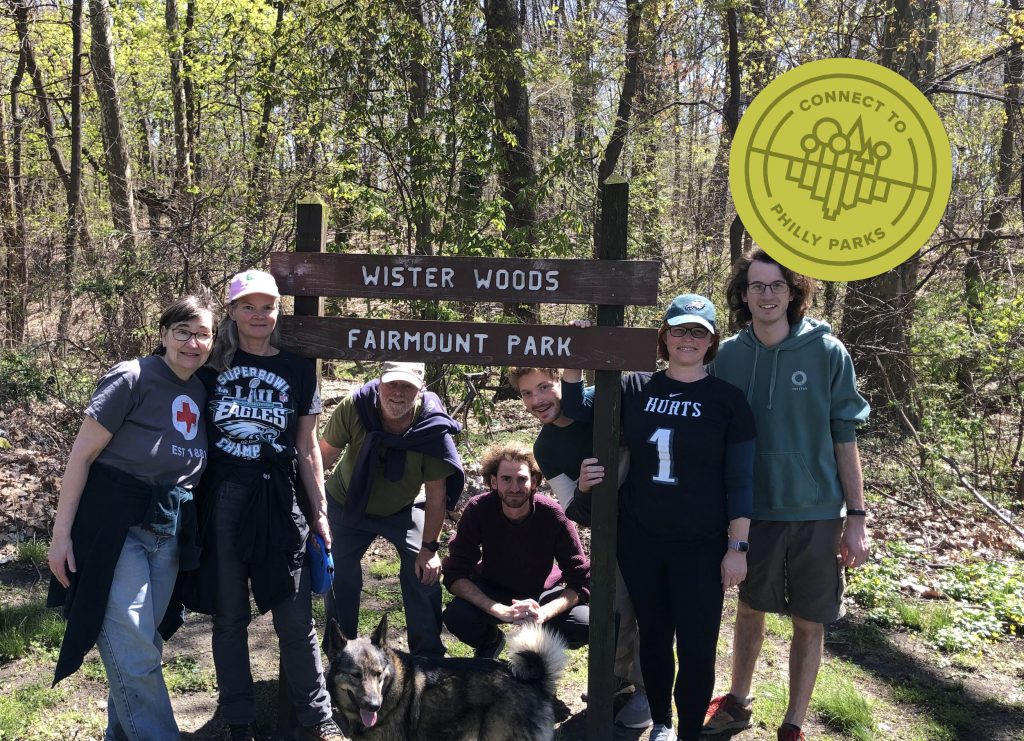The Fairmount Park Conservancy works collaboratively with outstanding community members through projects in Philadelphia’s network of parks. Together, we are maintaining and transforming neighborhood green spaces into community assets.
Dave Thomas, born and raised in the Olney section of Philadelphia, has been running at the Belmont Plateau cross country course for 42 years and counting. In 2014, Thomas approached Philadelphia city officials about getting help to rehabilitate the worn trails at the Belmont Plateau cross country course located just below the Belmont Mansion in west Fairmount Park. Thomas, age 57, estimated that the course was used by over 80,000 runners a year including youth, high school, college and club level. That number stunned city officials.
Problems at the course abounded: signs made in the 1970s were unreadable, courses changed from year to year and were not official length because of temporary markers. Erosion created dangerous running conditions. Thomas took the time to speak with the Fairmount Park Conservancy’s SJ Punderson to discuss his passion for ‘The Plateau’. This is the story of an ordinary citizen doing extraordinary things.
SJ Punderson: How did you get involved in the Belmont Plateau Trail Restoration Project?
Dave Thomas: I started doing it on my own. By 2009, trail maintenance had been falling through the cracks and things were in bad shape. The courses weren’t being maintained and the coaches, myself included, were putting up with it. I’m the men’s and women’s cross country and track coach at Philadelphia University and I noticed that my runner’s times were changing. The posts on the course were temporary and they weren’t being put into the same spot each season. The course was actually getting shorter. I knew I had to do something, so I went to the USA Track and Field (USATF) and asked to get the course measured and recertified. Bill Bellville of the USATF and I spent a good month and a half walking and measuring the courses, the 3K, 5K and 8K. I made temporary posts, then Bill and I cut them down to about four feet, painted each post with the course length and went out with a pick and shovel to sink them into the ground ourselves. The posts were supposed to be temporary, but they’ve been there for about three years now.
SJP: What kind of cleanup did the course need?
DT: It needed a lot of love. I knew I couldn’t do it on my own so I organized the first clean up day in 2009 and some of the PhilaU runners came with me. After that, I wondered, how I could get in touch with city? I’m just a guy, I don’t have any formal ties, so who’s going to listen to me? I can’t go out and do it myself. I knew we had to get this project done officially. That’s when I wrote a letter to Kathryn (Ott-Lovell) at the Fairmount Park
Conservancy in early 2014.
SJP: What makes the Belmont Plateau Trail such a special place?
DT: Nationally, Belmont is right up there with New York City’s Van Cortlandt Park and Franklin Park in Boston. These days, so many cross country courses are open and flat. Belmont Plateau has oak forests, rolling hills, bamboo patches, grassy straightaways and, of course, dirt. The place has character.
SJP: What channels did you go through to get the project off the ground?
DT: I contacted Jim Merino at Philadelphia Parks & Recreation, the Broad Street Run race director. Jim and Kathryn, they’re movers and shakers in Philadelphia and the timing was right because the city was in the process of reimagining west Fairmount Park. I went to a few of the public meetings and took the initiative to put together my own 10 page study of the Belmont Plateau Trail. The study included the history, the races and who used the course. I brought it to my first meeting with Kathryn and she said, “I didn’t realize how much it was being used. We’ve got to do something.” Merino got involved to help raise funds for the project through the Broad Street Run, adding a “Donate to the Belmont Plateau Restoration Project” check box to the registration page and Kathryn had the idea to create a Fairmount Park Conservancy team to run in the race.
SJP: What is your personal interest in this project?
DT: I went to La Salle College High School and started running at Belmont in 1973, when I went to Temple University. My coach there was Jack St. Clair, who designed the Belmont Plateau Trail with Penn coach Jim Tuppeny in the sixties.
SJP: What are the ultimate goals for the project?
DT: To create a safe, challenging course for any runner and to insert permanent, professional posts that will give runners easy to follow directions. If we do all of that and keep the courses well maintained, coaches will be able to bid for any number of championships: NCAA regionals, the PIAA or a USATF event.
SJP: Do you still run?
DT: I don’t race anymore, but I run. I’ll run about four or five miles a day. My favorite races are the Boston Marathon (he has ran it 19 times) and Comrades, a 56 mile ultra marathon in South Africa. My wife Marie was a race-walker for quite a few years.
SJP: What is your ideal day in the park?
DT: An ideal day for me is going for a sunny, hour-long run in either the Wissahickon Valley Green trail or on the cross country courses at Belmont. Living and running here for over 40 years has given me the opportunity to run and explore just about every park and trail in Philadelphia.
Chris Dougherty, Fairmount Park Conservancy project manager:
“From the very outset of the project, the Conservancy understood that for these improvements to be meaningful and useful for the city and region’s running community we needed their close engagement. This is where Dave has been phenomenal. He’s an institution in Philadelphia’s competitive running community and his personal devotion to the Plateau in terms of time and energy to maintain these historic courses has been inspiring.
As we’ve developed a new directional and wayfinding system for the various course loops at the Plateau, Dave has logged long hours reviewing and field verifying our program. You get a sense of his tremendous work ethic as a runner and coach from the way he’s tirelessly devoted to helping us raise the profile of this historic course.”



